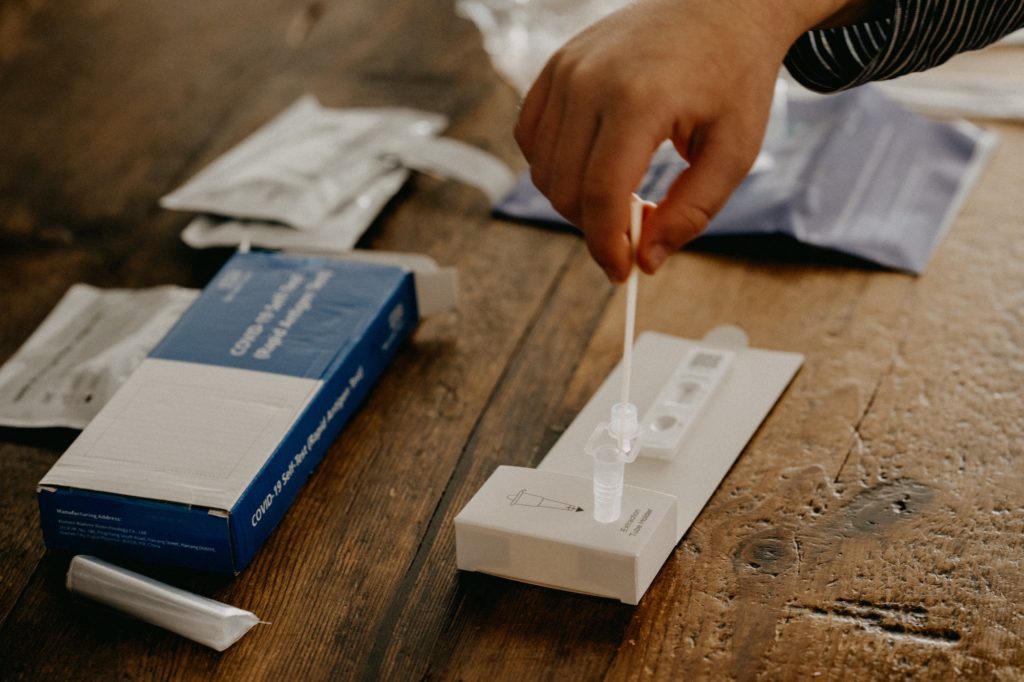COVID-19 has spurred the medical community to invest in at-home diagnostics, which can be cheaper, more scalable, and provide testing results faster than traditional lab diagnostics.
When the healthcare community first sought to get a handle on the COVID-19 pandemic, it became apparent that mass testing was key. And even when tests were difficult to come by, we found out that access was not the only problem. The speed by which we received positive or negative results added another layer onto what was becoming a precarious health crisis.
The rapid, real-time nature of the pandemic forced us to pivot to solutions that required less direct contact with others and faster diagnostics. And those needs led us directly to testing that could be done at scale, outside of the traditional lab environment.
And, in some capacities, some of that answer lied in at-home diagnostics. And as a result, use of these tests has skyrocketed. And, looking forward, that shift is likely not going to be exclusive to the pandemic. The lessons we have learned over the past year have led many to rethink how we diagnose disease and monitor health. Healthcare is reconsidering the status quo. In fact, digital health investments have tripled since 2017.
Why Investment in At-Home Diagnostics Will Continue to Grow
Here are three reasons why the use of at-home diagnostics has staying power, making lab-free, self-administered, at-home diagnostic testing the future.
1. Faster Diagnosis
COVID-19 clearly illustrated that we must diagnosis contagious illness quickly in order to contain it.
Over the past year, patients faced a lengthy process to get a COVID-10 test appointment, then they waited while their specimens were sent to the correct lab. Finally, they waited again for their results. The slow testing process contributed to the rapid spread of COVID-19, as infected people often didn’t quarantine until their results returned. In the meantime, the illness was spread to others, often without the infected person realizing that they were contagious.
In-home testing allows patients to administer a test and send it straight to the lab. Not only did this help healthcare offices become less overwhelmed, but it kept everyone distanced. Later, rapid, at-home antigen tests gave patients results quickly and without the use of the lab, further increasing impact.
And the advantages of rapid at-home testing will continue to be of benefit. This is not the first pandemic that our world has faced, and it likely won’t be the last. We are now better prepared for the future. But faster diagnosis is also critical to containing other contagious illnesses, including the flu. In addition, at-home testing can improve treatment of diseases where a fast diagnosis is critical, such as certain cancers. At-home tests can offer speed without compromising care.
2. A Cheaper Alternative

Lab diagnostics are expensive. Prices can range anywhere between $100-$1000 for a single test. This expense can mean that many vulnerable people go without a test and risk spreading disease. On the flip side, if the healthcare system foots the bill, the government is facing massive costs to ensure people are tested.
Manufacturing and distributing enough COVID tests to make them readily available over the past 18 months has been a critical part of the strategy to fight the pandemic. And with the average price of a COVID test coming in at around $100, there is no doubt that the cost of testing in the US has carried a heavy burden on tax dollars.
But at-home testing can be cheaper and provide healthcare cost savings. And because they often can be conducted at a lower price, they can enable more of the population to get tested. And while COVID is the focus now, the technology that we are investing in can and will be applied to other diseases in the future. The framework is being laid.
3. Increased Scalability
In the midst of a fast-spreading pandemic, scalability is another crucial piece as it relates to testing. To be effective, testing must outpace cases, even as they rise exponentially.
During the peak times of COVID infection, ICUs filled and testing lines took hours. Not only does this affect the quality of care, but it leaves healthcare workers overwhelmed, burned out, and demoralized. When the pandemic overtook New York in the early part of 2020, critical diagnoses were missed because hospitals were unprepared for the onslaught of cases and could not scale to accommodate them.
At-home testing diagnostic platforms provide a scalable alternative to limited and overcrowded in-person testing sites, opening the door to better, proactive health monitoring. If everyone has access to a “mini-lab” at home, results come back faster. In addition, once an at-home diagnostics infrastructure is in place, companies may be incentivized to develop preventative tests that, due to scale, may be more affordable. From a preventative medicine standpoint, these diagnostics will help speed diagnosis and potentially prevent severe illness.
At-Home Diagnostics: The Next Phase in Medicine
At-home diagnostics can not only transform how we approach future pandemics, but they have the potential to shape a new phase in medicine. The next step? Finding medical device entrepreneurs who can usher this vision of the future into reality.
Does your medical device company need specific, in-depth market intelligence and analysis to help you best understand an at-home diagnostics market opportunity? Jaunt can help. Contact us to learn more. Contact us to learn more.





